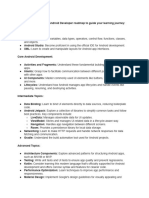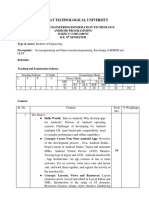0% found this document useful (0 votes)
30 views58 pagesKotlin Advanced Concepts Android 50p
This document is a comprehensive guide for senior Android engineers focusing on advanced Kotlin concepts, excluding Jetpack Compose. It covers a wide range of topics including type systems, concurrency, architecture, performance, and security, with an emphasis on practical applications in Android development. The guide assumes familiarity with core Android principles and offers detailed explanations and patterns relevant to experienced developers.
Uploaded by
mahaprasad.srib.iotCopyright
© © All Rights Reserved
We take content rights seriously. If you suspect this is your content, claim it here.
Available Formats
Download as PDF, TXT or read online on Scribd
0% found this document useful (0 votes)
30 views58 pagesKotlin Advanced Concepts Android 50p
This document is a comprehensive guide for senior Android engineers focusing on advanced Kotlin concepts, excluding Jetpack Compose. It covers a wide range of topics including type systems, concurrency, architecture, performance, and security, with an emphasis on practical applications in Android development. The guide assumes familiarity with core Android principles and offers detailed explanations and patterns relevant to experienced developers.
Uploaded by
mahaprasad.srib.iotCopyright
© © All Rights Reserved
We take content rights seriously. If you suspect this is your content, claim it here.
Available Formats
Download as PDF, TXT or read online on Scribd
/ 58





















































































